Castles 2017
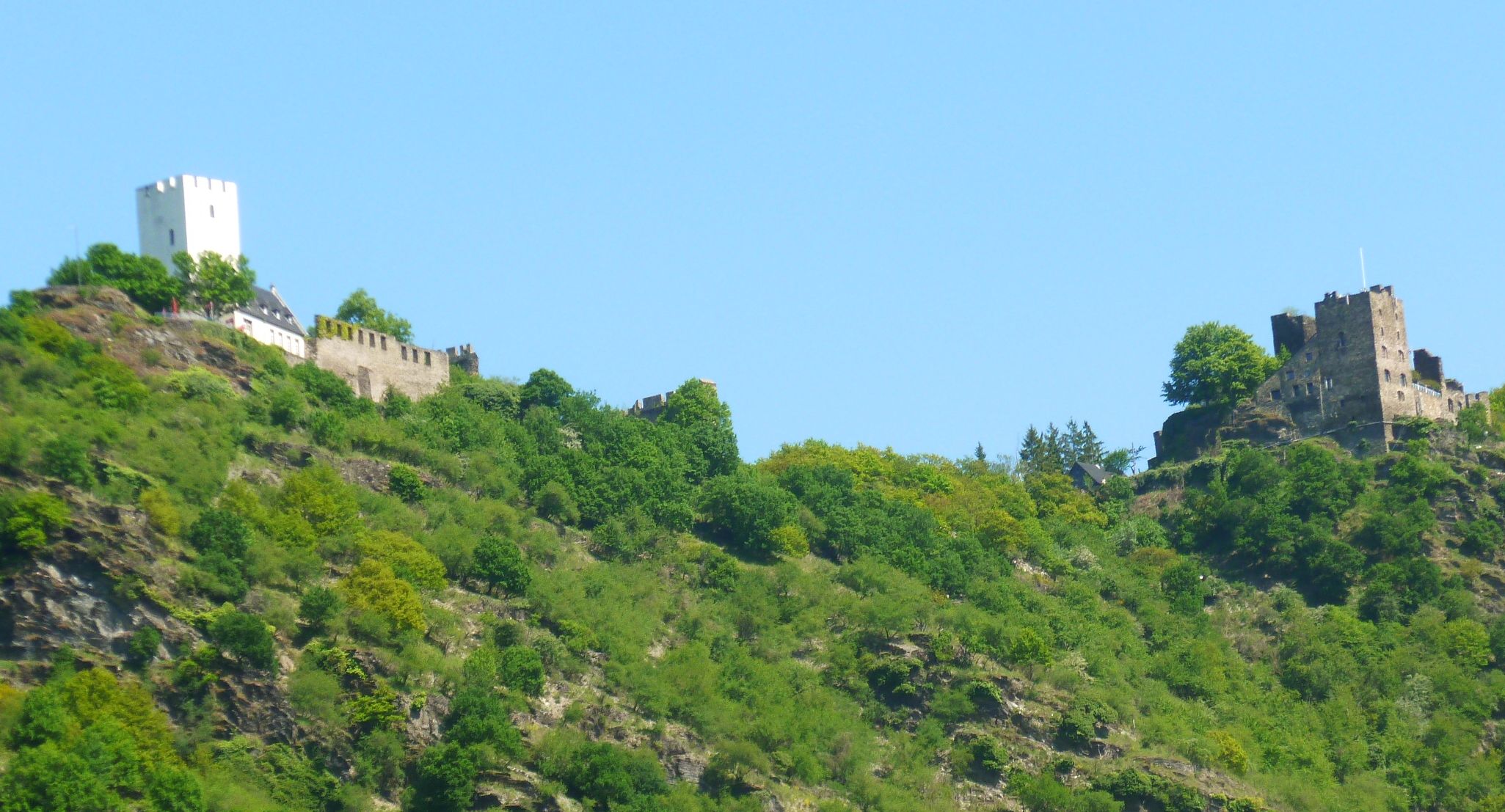
In popular speech Sterrenberg Castle and Liebenstein Castle are called the "Hostile Brothers". Probably the disputes of the different owners of the castles inspired the legend around the hostile brothers, first told in 1587.
In reality Liebenstein Castle, built in the 13th Century and therefore the younger one, was the forecastle of Sterrenberg Castle. The two shield walls serve as improved defence of Sterrenberg. There is no historic evidence that they were meant against Liebenstein Castle.

Maus Castle, which is actually called Thurnberg, was occasionally the favourite residence of the electors of Trier. Archbishop Balduin built the castle between 1353-1388 for the protection of his newly acquired territory. It was one of the most modern and technically most interesting constructions of its time. About 1370 the counts of Katzenelnbogen built the mighty stronghold Neu-Katzenelnbogen on the adjoining mountain.
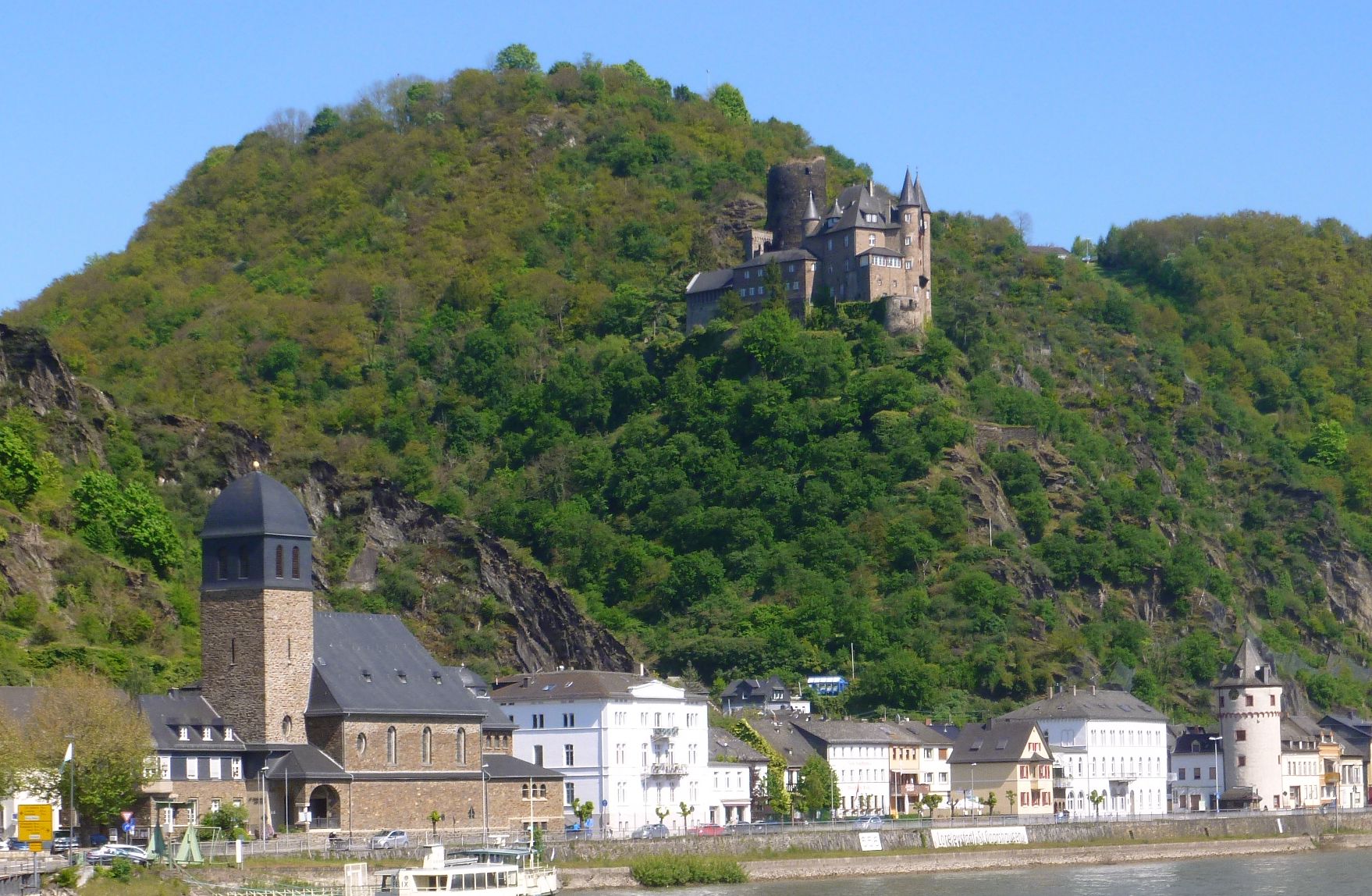
Count Wilhelm I. of Katzenelnbogen has built the Katz Castle in the second half of the 14th century. Katz Castle was used as bastion and military base to protect the Rheinfels Castle. Together they formed a fortified bulwark with a barrier for levying of the Rhine toll. The extended view up to the bend of the river at the Loreley was also of great importance to secure salmon fishing. Due to the intentionally chosen location on the mountain ridge Katz Castle could not possibly be conquered from the valley.
Only after the invention of fire arms, Katz Castle had to be substantially reinforced. It was also upgraded as bastion against Maus Castle in the Electorate of Trier.
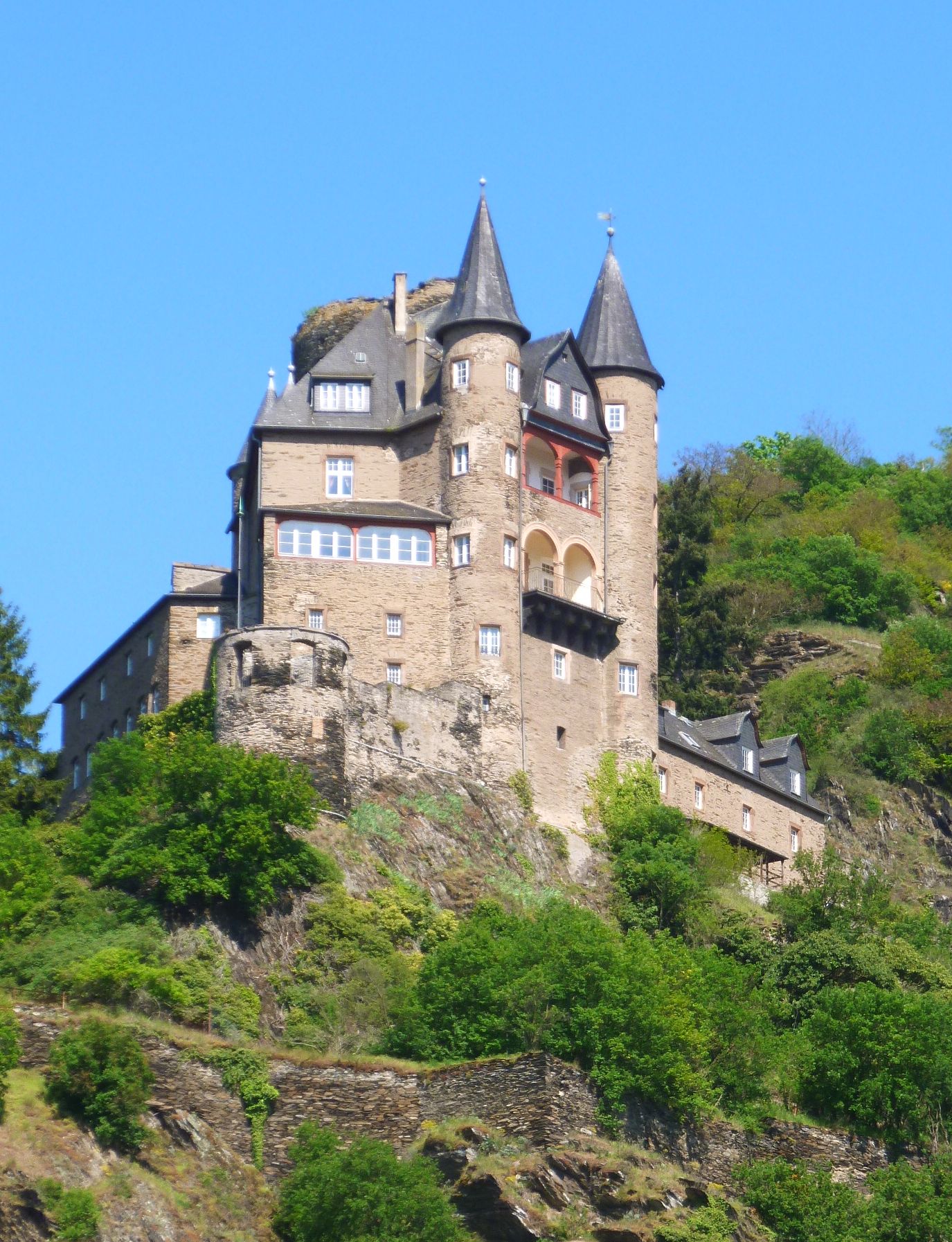
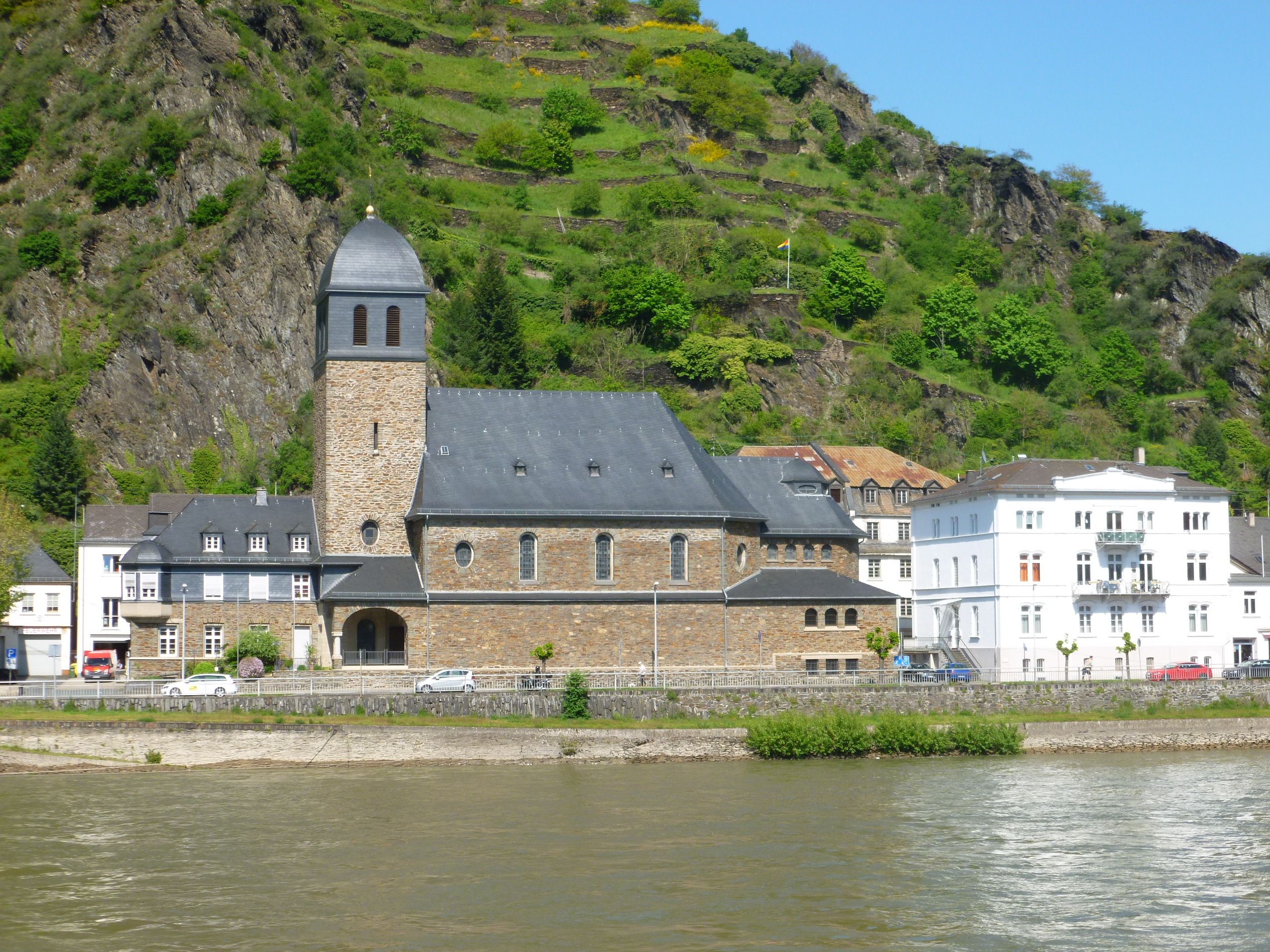
Besides the castles, there were many interesting villages and hillsides. The terraces on this hillside no longer have grapes but have filled in with grass.
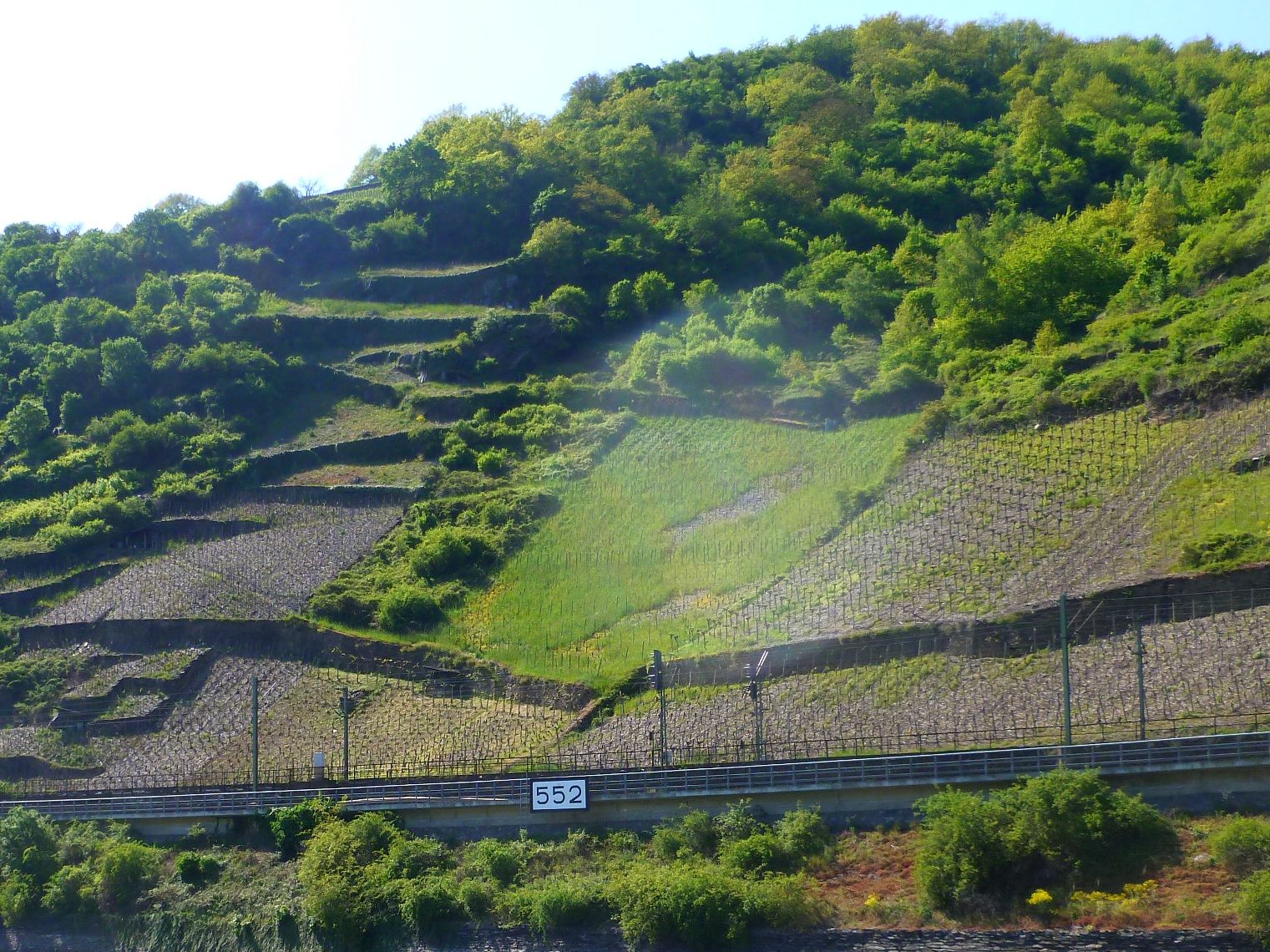
Other hillsides had both mature vines and new vines.

We even saw a man working on the steep slopes.
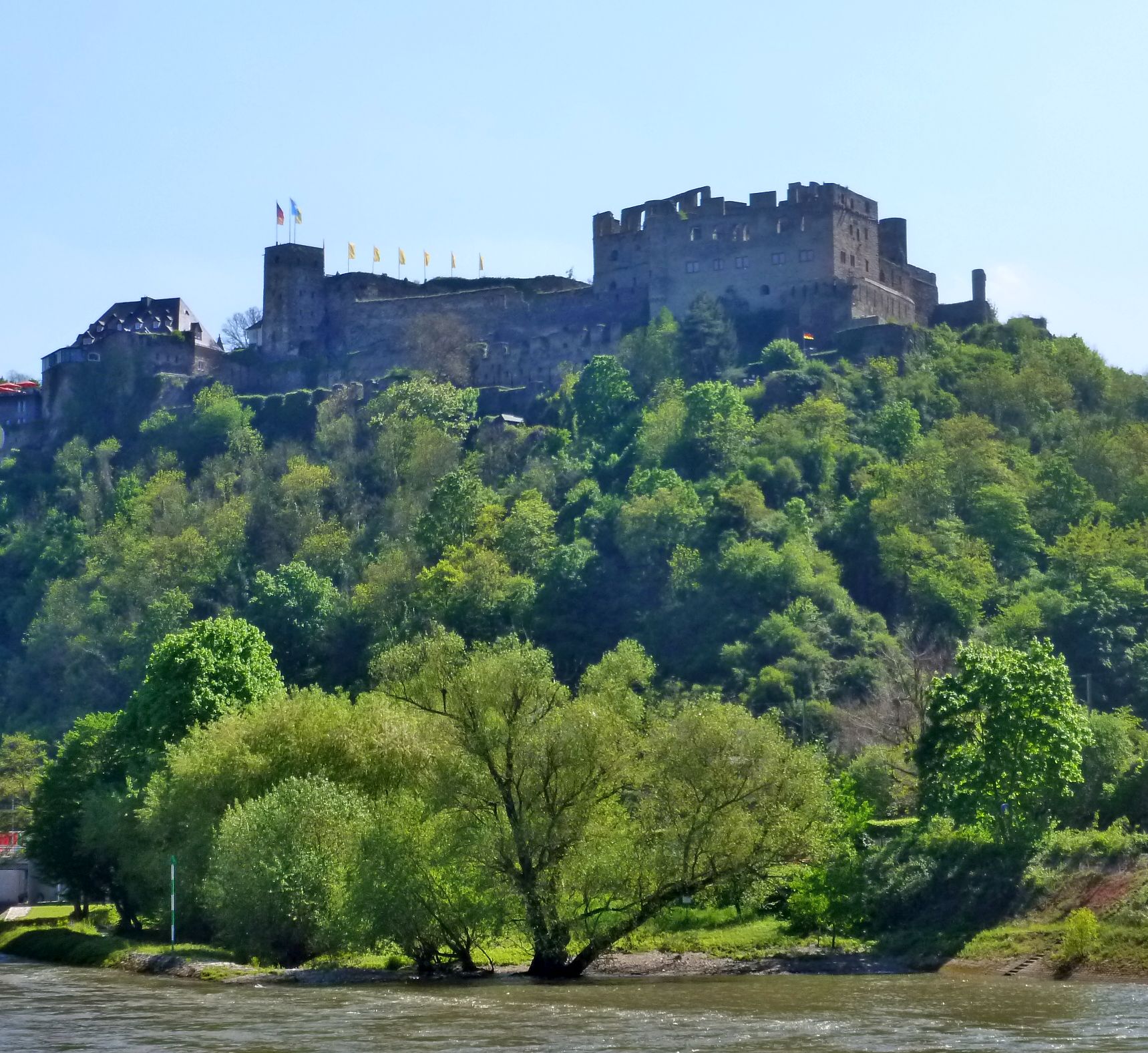
The counts of Katzenelnbogen founded Rheinfels Castle around 1245. The castle was used as the count’s residence and was one of the most significant centres of courtly life of the region. In 1479 the castle came to the landgraves of Hessen who expanded Rheinfels to a fortress. As the only military complex arrangement on the left bank of the Rhine river it withstood the troops of Louis XIV in 1692.
Then in 1794 Rheinfels fell - indeed, without a fight - to the French revolutionary army, that blew it up. The remains served later as a stone quarry for the reconstruction of Ehrenbreitstein, before Prince Wilhelm of Prussia acquired the medieval part of the ruin in 1834.
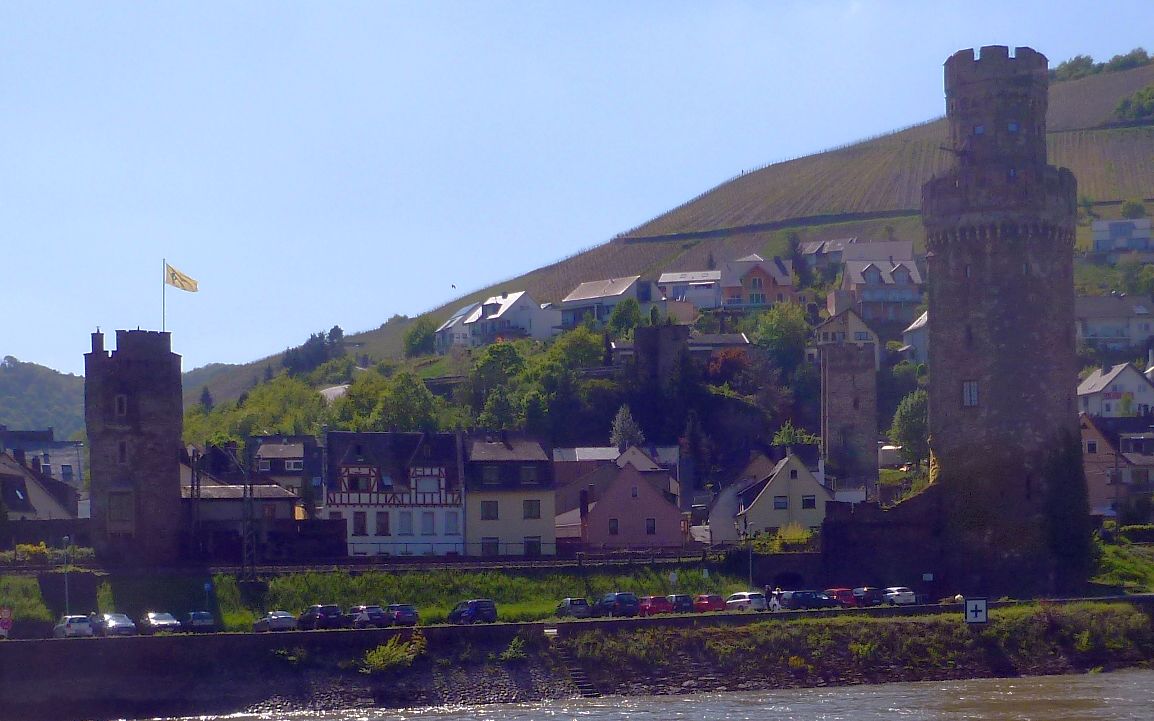
The Oxen tower, on the right, is a medieval tower that dates back to the Roman period.
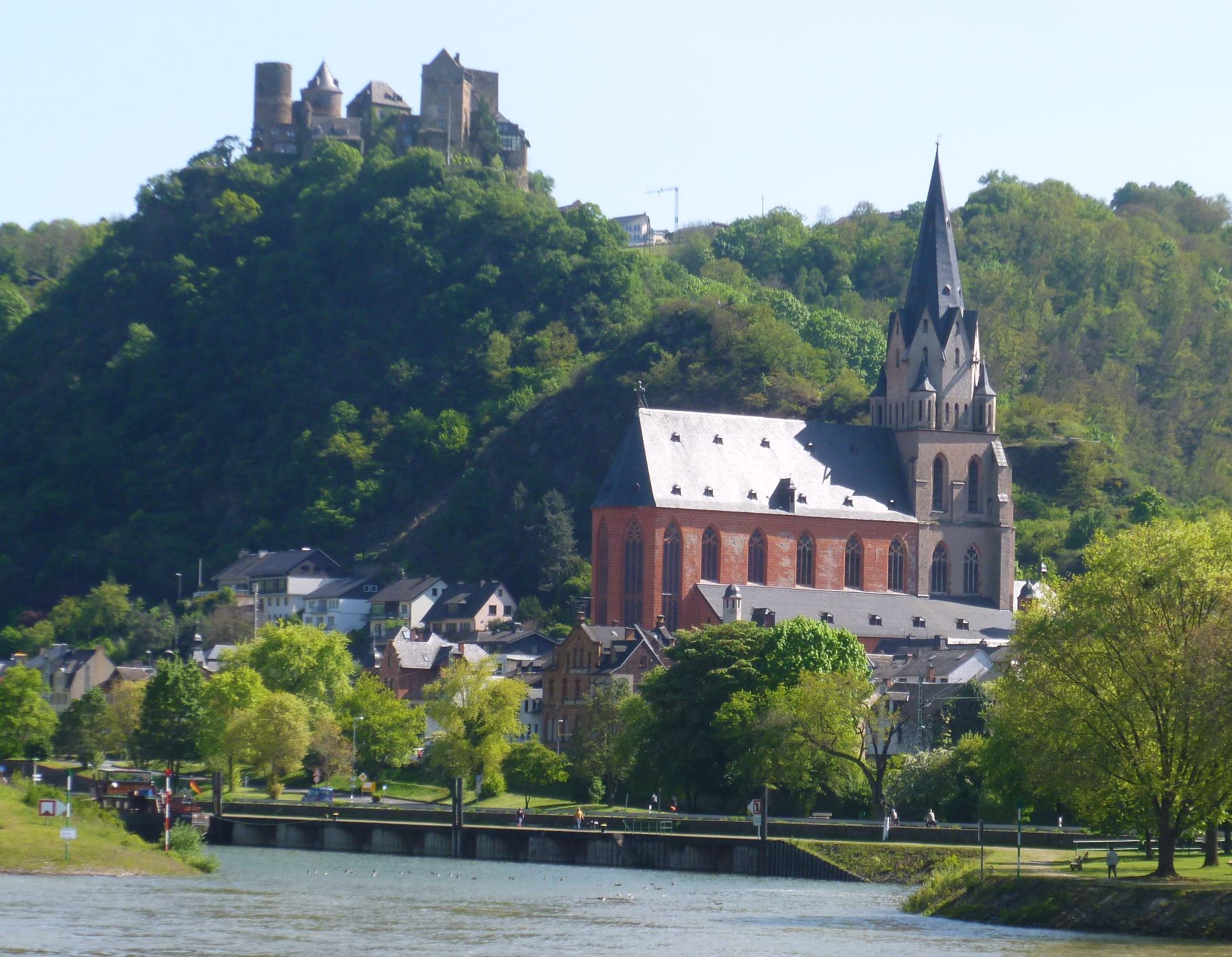
Today Schönburg Castle lives up to its name and accommodates a famous hotel.
In 1149 the castle owned by Hermann von Stahleck was temporarily an Empire Castle and came into possession of the Schönburg dynasty. Like several of its neighbours Schönburg Castle was destroyed in 1689.
Since 1885 it has been rebuilt bit by bit into its current condition. The powerful shield wall is one of the most important of its kind.

A telephoto shot of the Schönburg Castle.
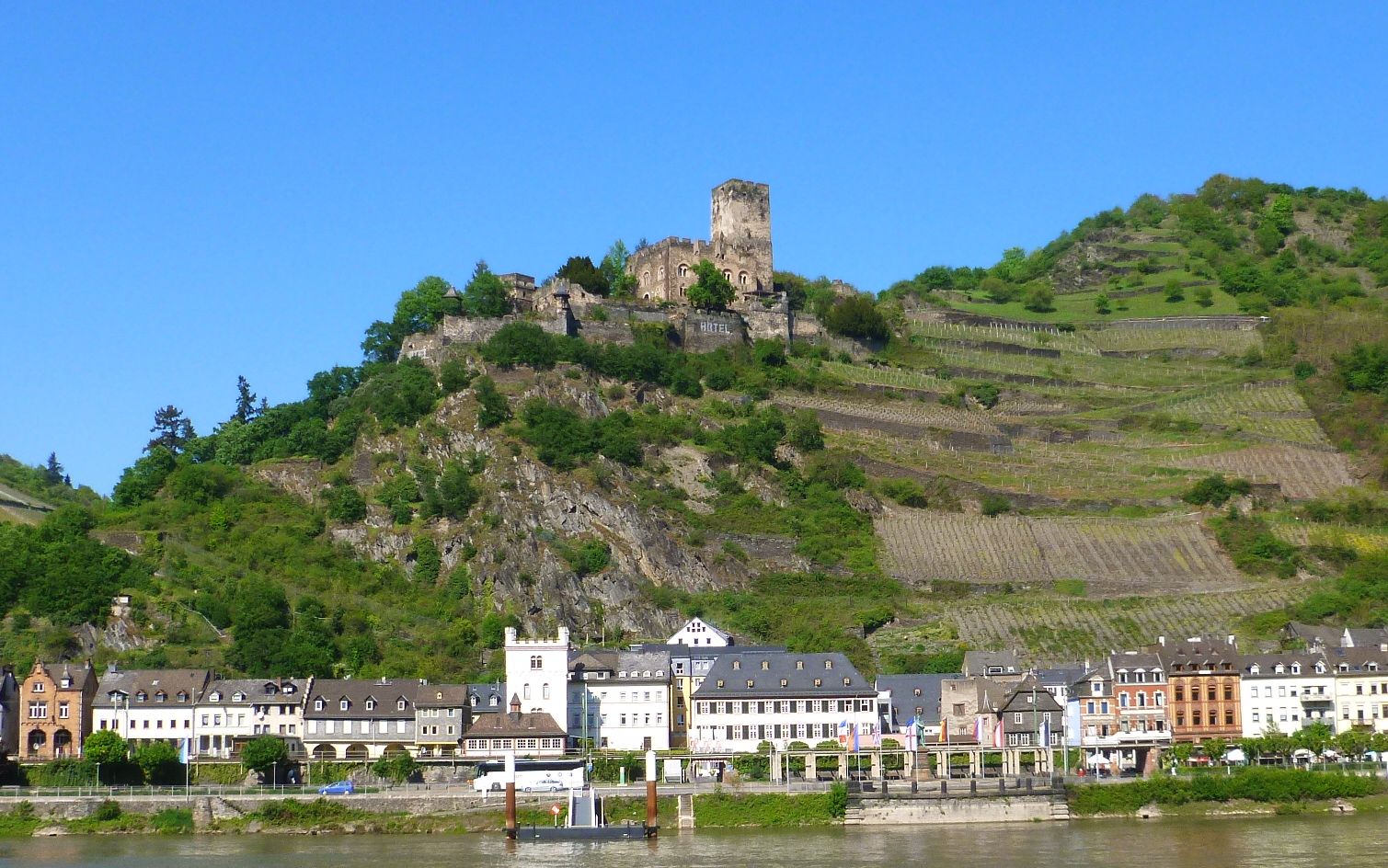
The Gutenfels Castle, primarily owned (since 1257) by the Falkenstein family, is one of the most important examples of the Hohenstaufen military and house construction style at the Rhine.
Since 1277 it has been a castle of the Electorate of Palatinate. After an unsuccessful siege in 1504 by landgrave Wilhelm from Hessen, the castle was renamed Gutenfels (solid rock).
Rebuilt between 1889 and 1892 it is now used as a hotel.

Built in 1327 by Ludwig the Bavarian, the Pfalzgrafenstein at Kaub served as a toll station until 1866.
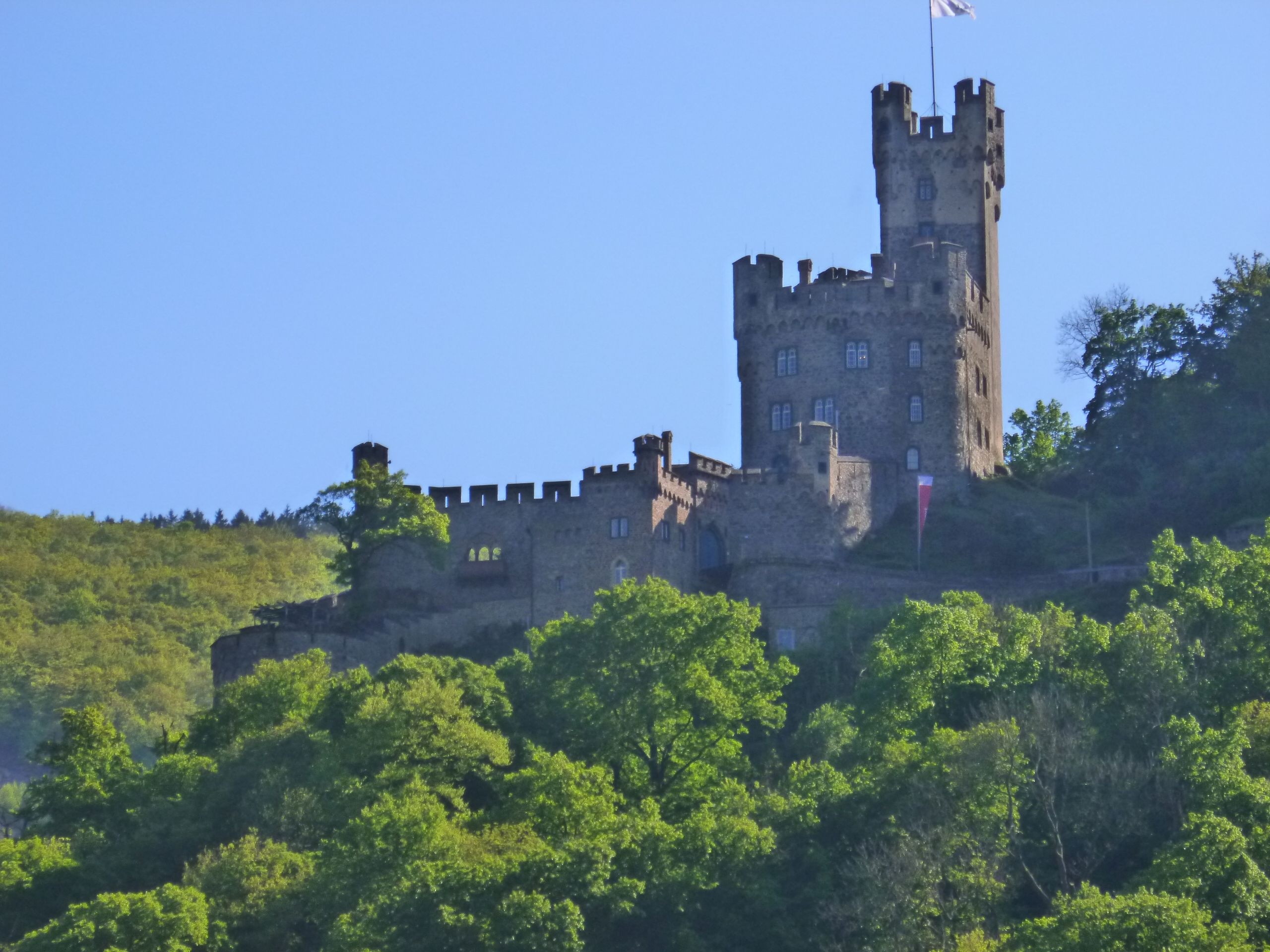
Sooneck Castle, probably built in the 11th century, was part of an expanded defence system of the abbey Kornelimünster near Aachen. The chatelains neglected their obligations, undertook raids and raised toll arbitrarily, which impaired the trade strongly. King Rudolf of Habsburg put an end to their practices in 1282. One robber nest after the other, also Sooneck, was destroyed. The rebuilt castle was again destroyed in 1689. Friedrich Wilhelm IV. ordered to convert the ruin into a hunting seat in 1842. He commissioned the Prussian architect Schnitzler to do the work, which was finished in 1861.
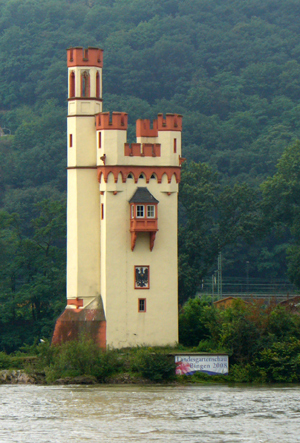
This photo from 2007 shows the Binger Mäuseturm ("the Mice Tower of Bingen"), a customs tower built in 1298 on an island between the Rhine's shores.
Its name is part of a legend in which the villanous archbishop Hatto of Mainz plays a major role. To eradicate poverty, he had burnt a number of poor people in a shed, ironically commenting on their death cries: "Hear, hear how the mice squeak!" As punishment by the heavens he was plagued by mice, and he fled to the tower to secure himself. But the mice crossed the Rhine to the island, penetrated the tower, and devoured the bishop alive.
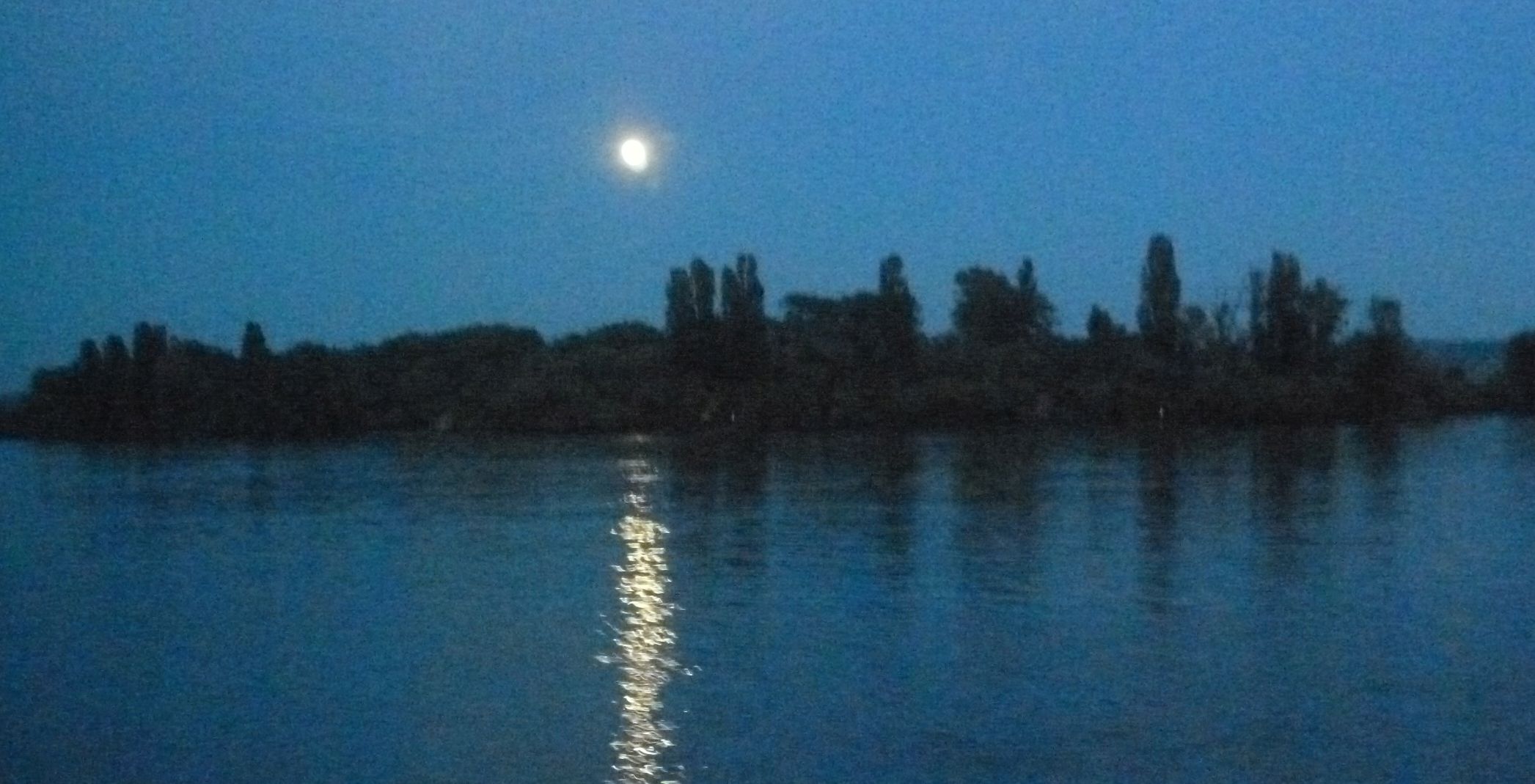
We walked for the ship to a restaurant in Rudesheim for dinner. There was a full moon when we returned to the ship.

